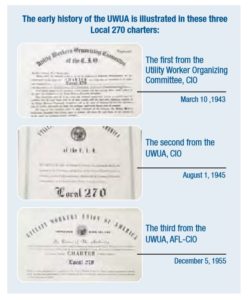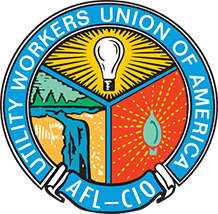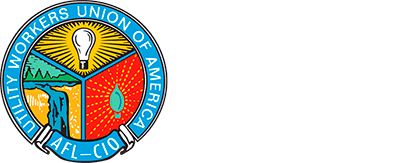On April 6, 1946, members of the Utility Workers Union of America gathered for their first Constitutional Convention and voted to adopt the UWUA Constitution.
Ever since that day, the UWUA has lived by this constitution, which has served members, their families, communities and the country well for 75 years. It is as valuable today as it was when first written.
History is important. It informs the present and guides the future. UWUA early history is covered very briefly here.
 The UWUA of 1946 emerged after decades of utility workers organizing and struggling under the harshest conditions. Its origins can be traced to the 1930s, when unionism became a tool for redressing issues between workers and employers. The slenderest roots of the UWUA can be found in New York, Michigan, Pennsylvania, California, Ohio, Massachusetts, and Rhode Island to name a few states.
The UWUA of 1946 emerged after decades of utility workers organizing and struggling under the harshest conditions. Its origins can be traced to the 1930s, when unionism became a tool for redressing issues between workers and employers. The slenderest roots of the UWUA can be found in New York, Michigan, Pennsylvania, California, Ohio, Massachusetts, and Rhode Island to name a few states.
At the time, the American Federation of Labor already existed and organized members along craft lines. Some AFL affiliates, led by United Mine Workers President John L. Lewis, believed there was a need to organize industrial workers across all crafts and job classifications. This led to the creation of the Congress of Industrial Organization (CIO) within the AFL.
The CIO created the Utility Worker Organizing Committee (UWOC), which evolved into the UWUA. Lewis put together the core group of leaders who shaped the direction of the nascent organization.
Due to internal conflict, the AFL expelled the CIO in early 1938. On February 1, 1938, CIO President Lewis issued the first Charter to the UWOC with jurisdiction to organize workers in the gas, electric, telephone, and railroad companies throughout the country.
Later that year, the CIO met in Pittsburgh, Pennsylvania and, changing one word in the original name, formed the Congress of Industrial Organizations with Lewis as the first president and Phillip Murray, president of the Steelworkers, and Sidney Hillman, president of the Clothing Workers as vice presidents.
Many locals started in the 1930s
For the first few years, the UWOC successfully organized thousands of utility workers into the CIO. Many UWUA locals of today trace their roots back to this period. To cement their gains, more than 50 delegates representing 180 local unions gathered in Pittsburgh on October 31, 1942 to hold the first Constitutional Convention of the Utility Workers Organizing Council.
In 1945, the UWOC merged with Local 2 of New York Consolidated Edison forming the UWUA, CIO. After the merger of these two large unions, utility workers achieved national strength and, in April 1946, they came together at the first Constitutional Convention of the Utility Workers Union of America, CIO.
Following another decade of success, in 1955, the UWUA, CIO became an affiliate of the AFL-CIO when the CIO rejoined the AFL.
Future issues of The Utility Worker will cover historic events up to the present and lay the groundwork for the future.

